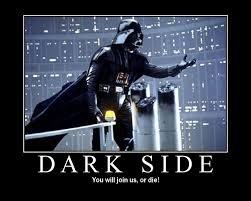Do You Get Naked with Your Clients?
 I spent the past week in St. Thomas for my annual timeshare week. It is always a great getaway, and this one came and went with a lot of time at great beaches, meeting new people and doing some reading. I got to spend the night at Jost Van Dyke, which is something that I’ve always wanted to do. The time around Soggy Dollar Bar goes fast and you get dragged away, if you are there on a tour boat or take a ferry, just when things seem to be the most fun. Staying the night was a great way to relax and enjoy the new friends and amazing beach, and contemplate the opportunities the new vertical has for us at Efficience.
I spent the past week in St. Thomas for my annual timeshare week. It is always a great getaway, and this one came and went with a lot of time at great beaches, meeting new people and doing some reading. I got to spend the night at Jost Van Dyke, which is something that I’ve always wanted to do. The time around Soggy Dollar Bar goes fast and you get dragged away, if you are there on a tour boat or take a ferry, just when things seem to be the most fun. Staying the night was a great way to relax and enjoy the new friends and amazing beach, and contemplate the opportunities the new vertical has for us at Efficience.
The reading I got to do was very insightful and gave me several ideas to help me with my business. It was the book that Jack Daly recommended at the Nerve conference recently as the best sales book ever, which is called Getting Naked, by Patrick Lencioni. It wasn’t what I was expecting, when it came to a book that is supposed to help you with selling. But it all came down to what we admire in people, and that is being real and humble. The book is told in a fable and it is a good read, with the format helping to make the points very clear.
What it comes down to, is that when the business consultant went in to do the sales presentation, it was actually a bunch of questions that dug into the business and the issues they were having. He gave away his advice, and did so without any commitment from the potential client. There was no priced discussed, unless the client asked the question. This was all about adding value and showing the prospect that he was there to help, and if they found his services of value, then they would engage said services. This went down to creating a successful practice without having to actually sell, at least in the traditional sense.
What is revealed from the fable is that people have three fears when selling. They are the fear of losing the business, the fear of being embarrassed, and the fear of feeling inferior. When you are trying to sell and protect yourself from these fears, it works to prevent us from building trust and loyalty with our clients. When you provide your services in more of this naked fashion, you are sharing humility, selflessness and transparency, which when shared does create a bond with others. This bond leads to a level of trust that builds real relationships with clients that last during good and bad times, and even when you charge more than the competition.
In the next blog I will discuss the three fears in more detail. In the meantime, are you being naked when you are working with your clients?







